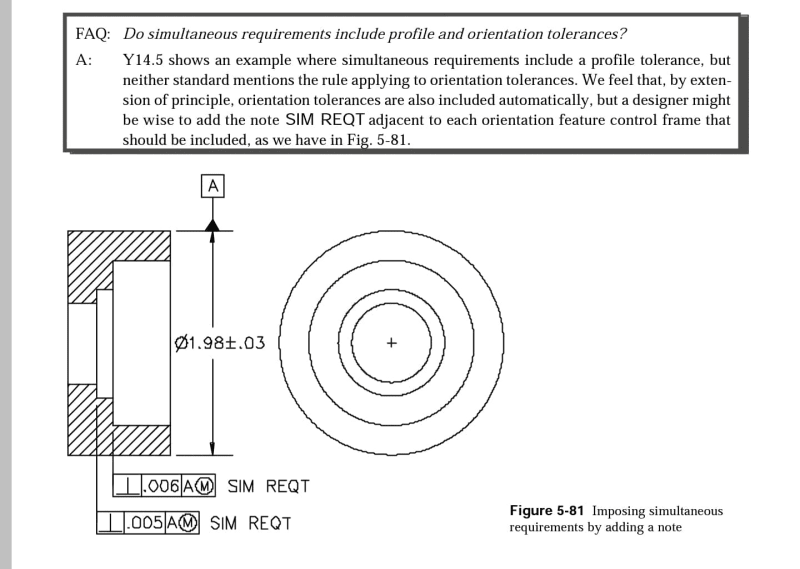Inspector_Brent
Aerospace
Morning all,
I wanted to get clarification from the experts on this, being that I don't have direct access to the Y14.5-1994 standard. We have a parallelism callout to 3 surfaces back to -A-, and there is debate in my department about whether this is meaning to treat the 3 surfaces as a single plane for this purpose, or if its a callout for each pad individually. My understanding would be that without the CF modifier, this callout would be for each pad on its own. Thanks in advance for your time.

I wanted to get clarification from the experts on this, being that I don't have direct access to the Y14.5-1994 standard. We have a parallelism callout to 3 surfaces back to -A-, and there is debate in my department about whether this is meaning to treat the 3 surfaces as a single plane for this purpose, or if its a callout for each pad individually. My understanding would be that without the CF modifier, this callout would be for each pad on its own. Thanks in advance for your time.


